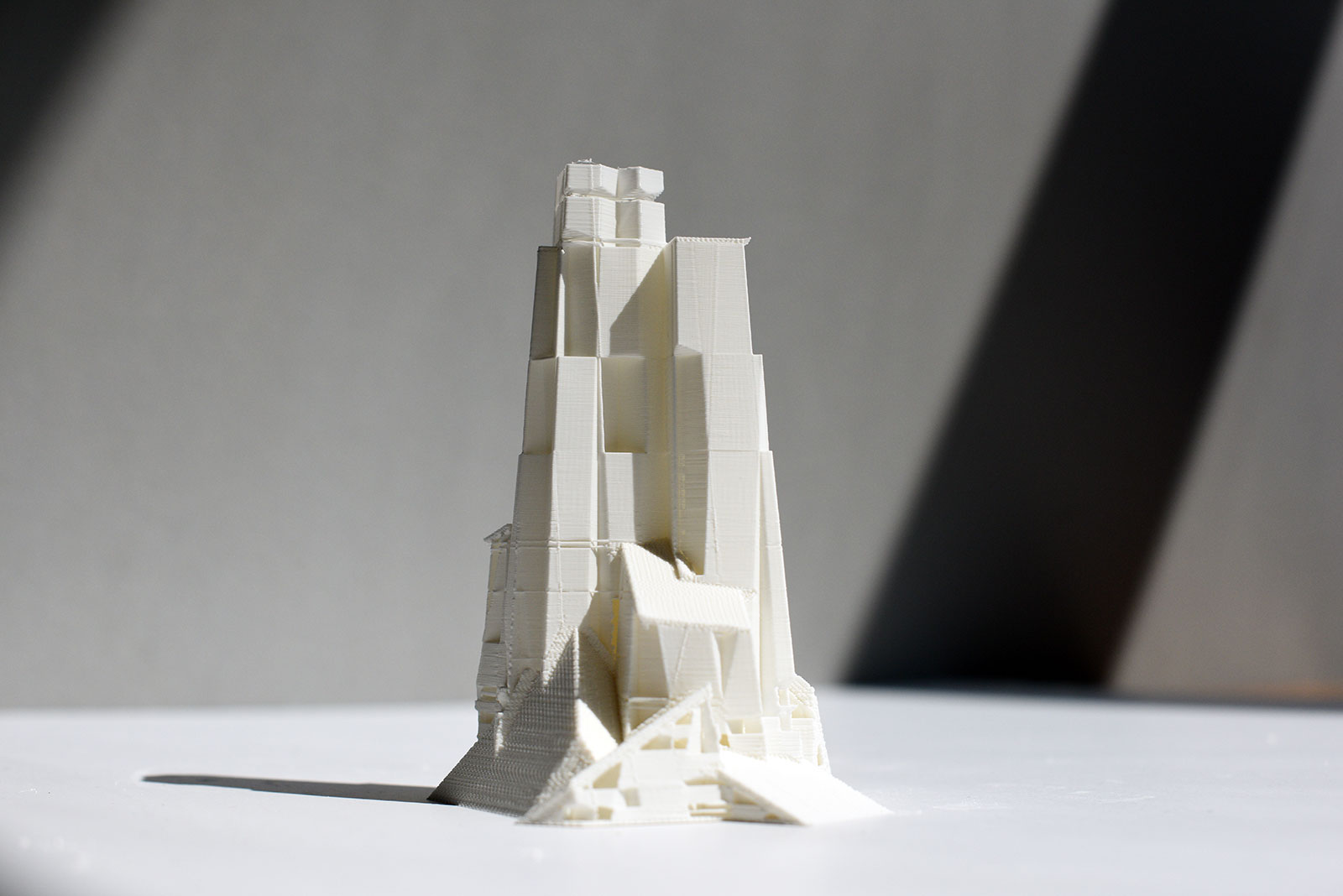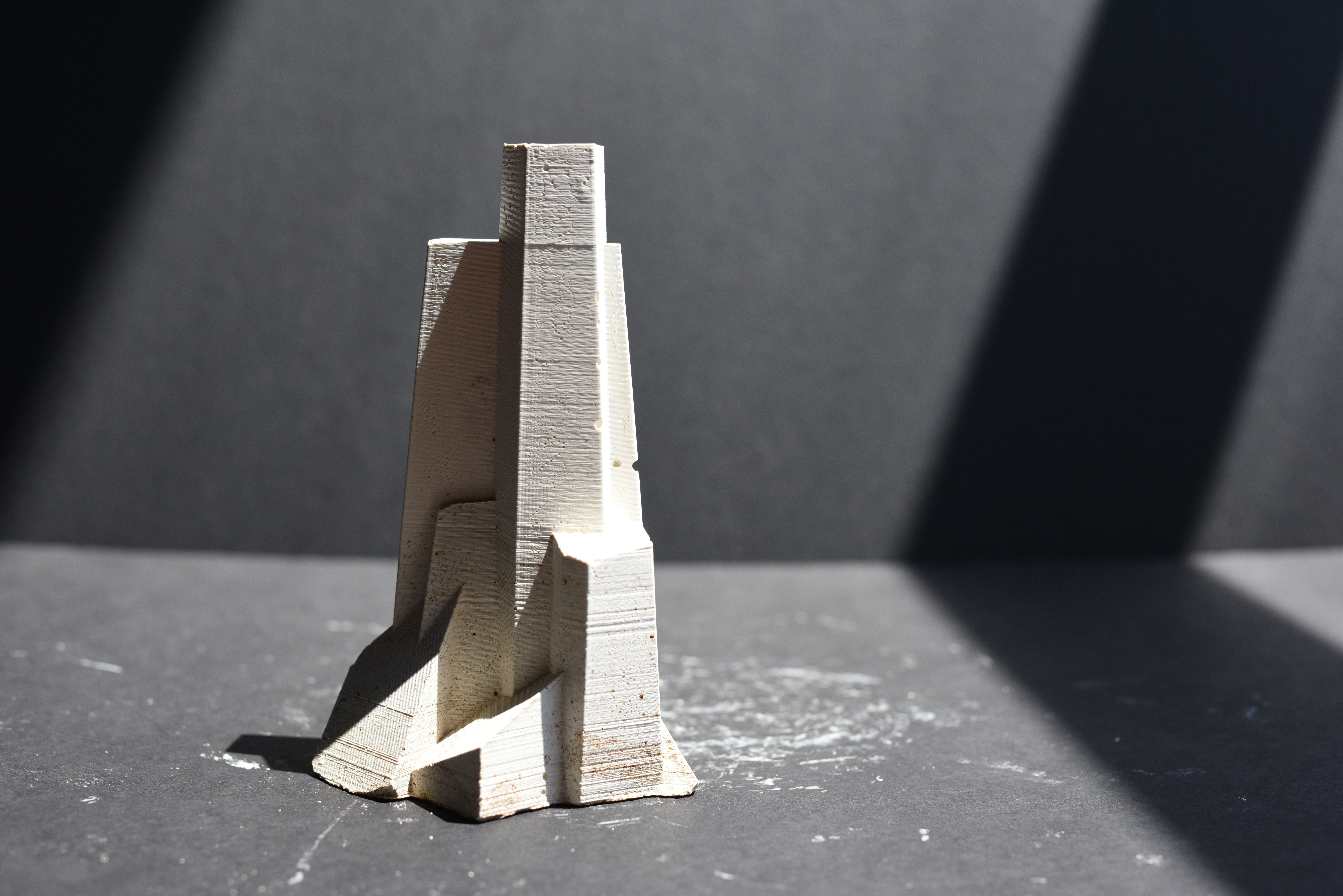S.S.A.L.T.
GRADUATE THESIS PART II
UC BERKELEY, MArch STUDIO ONE 2019
AS PART OF STUDIO ONE 2019
From the transnational landscapes of the U.S./Mexico border to the marijuana farms of Humboldt County, from the plastic dreams of Los Angeles to the silicon dreams of the San Francisco Bay Area, California is both one of the largest economies in the world and home to much of the world's imagination about the relationship between technology, nature, and what it means to be human in the 21st century.
— Nicholas de Monchaux, Studio ON, 2018
UC BERKELEY, MArch STUDIO ONE 2019
AS PART OF STUDIO ONE 2019
From the transnational landscapes of the U.S./Mexico border to the marijuana farms of Humboldt County, from the plastic dreams of Los Angeles to the silicon dreams of the San Francisco Bay Area, California is both one of the largest economies in the world and home to much of the world's imagination about the relationship between technology, nature, and what it means to be human in the 21st century.
— Nicholas de Monchaux, Studio ON, 2018
Studio One, the one-year Master's program in advanced design of UC Berkeley's College of Environmental Design and lead by Nicholas de Monchaux and Geoff Manaugh for the academic year 2018-2019, focused on imagining a particular set of futures for this remarkable Californian landscape. Throughout the year, the students developed architectural scenarios in an attempt to highlight and explore the limits of some of the qualities that ultimately render California a design project: cutting-edge industrial design, the global cinematic imagination, unparalleled demographic integration, agricultural innovation, adaptive infrastructure, and the effects and risks of climate change.
Mining the rich visual and tectonic history of California dreaming, Science Fiction And The Future Of California's Ecology presents the final set of the studio's collective visual, spatial and architectural assertions about what it means to live at the end of a continent, at the end of drawing, at the end of nature, and at the beginning of a new relationship between architecture, media, ecology, and craft.
EXHIBITED IN
DEEP CITY: Climate change, democracy and the digital at
The Rolex Learning Center
EPFL Architecture in Lausanne
The University of Hong Kong
Singapore University of Technology and Design
2021
https://deepcity.ch
DEEP CITY: Climate change, democracy and the digital at
The Rolex Learning Center
EPFL Architecture in Lausanne
The University of Hong Kong
Singapore University of Technology and Design
2021
https://deepcity.ch
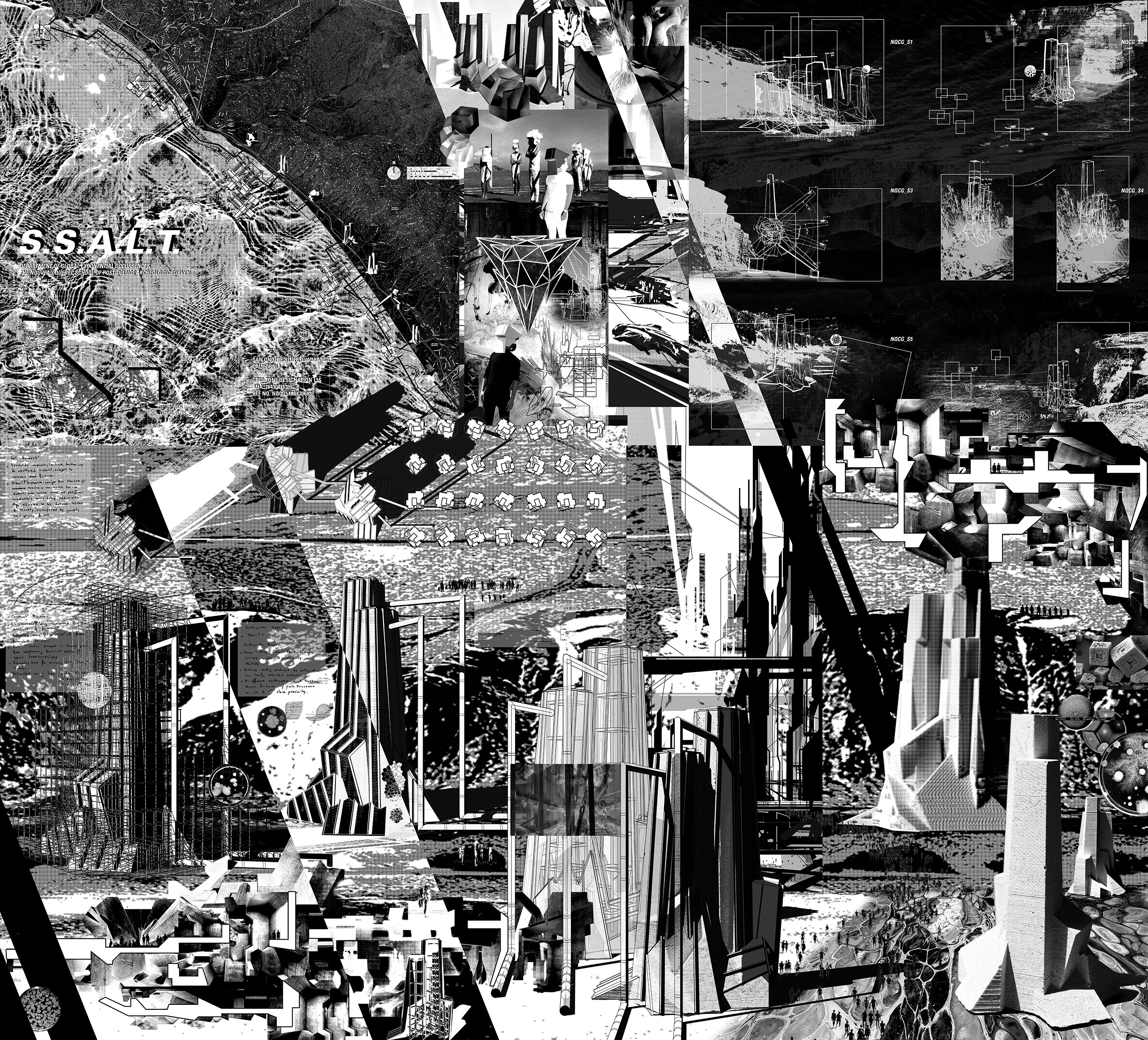
ARCHIVES D’AVANT LE DELUGE, NOUVEAU QUEBEC, 347 ADL,
FONDS RUINES DE SEL DU CALIFORNIE, FICHIER 345, BOÎTE 7,
(COUPE DE PRESSE):
CONSTRUCTION TO START FOR SALT “DOOM” SENTINELS
- ARE WE REALLY THAT DOOMED?
LOS ANGELES, JANUARY 18, 2035
Thousands of people have been heading towards San Onofre all weekend to witness the casting of the very first “Salt Sentinel”, a happening set to take place this Sunday at dawn.
A project coupled with controversy from the moment of its inception, scholars have went as far as calling them “Obelisks of a Fallen Civilization”. FOR LOCAL RESIDENTS SUCH AS RAYMOND FL …
(TEXT NON LISIBLE)…
answers what are these sentinels? Who commissioned them? Who funded them? The Los Angeles Times talks with Head Engineer on site to uncover the secrets of these mysterious structures, cast into place from the excess salt produced from one of the many coastal desalination plants of California… (FIN DE PAPIER)





Good morning and welcome to the first session of our conference, taking place on the 16th of December 2092.
The Department of Exponential Occurrence and the Nouveau-Quebec School of Post-Deluge Archeological Survey will present the reasons and methods behind the construction of the controversial structures known as the Salt Sentinels of San Onofre of California.
The construction of the series (7?) of sentinels appears to have taken place between 2035 and 2053, on the southern coasts of California, between San Clemente and Oceanside.
Even after many reports and statements archived from the late American Government, the “real” reasons behind the construction of these sentinels is still a heated debate amongst sentinel enthusiasts around the globe, particularly given their fate after the rising sea levels and floods (the deluge).
For those of you who don’t know of the sentinels, they’re pieces of architecture that the late soon-to be separated government of the California Republic had commissioned to be built from the excess salt produced from neighboring desalination plants. Many desalination plants were built on the coasts of California in the 2010’s and 2020’s to respond to the shortage of fresh water in the country.
Reports had said that they were “architectural follies” making use of the excess of salt that would have otherwise poisoned coastal ecosystems in concentrated doses. Others maintain that the government wasn’t transparent about the real reasons behind their construction, and that their true purpose will never be known.
It is widely believed that the government was well aware of how much the sea levels were to rise and had built these structures as sentinels, as totems to warn and gauge the extent of environmental degradation and collapse.
You see, the more the sea levels rose, the more visibly and dramatically these structures dissolved and physically collapsed on the shores of California.
![]()
![]()
![]()
![]()
![]()
![]()
The West Coast has never been foreign to conspiracy theories and the buzz that was generated during and after the construction of these sentinels triggered a social phenomenon of its own, with many judging their construction as a sign of the government admitting a point of no return from the consequences of climate change.
Just as obelisks were once erected to showcase the might of a civilization, many assumed that these sentinels built with salt, vulnerable and delicate, were designed to deteriorate easily and dramatically, as if to jolt future generations awake to their impending demise.
Often compared to the statues of the Easter Islands, the sentinels represent a last-ditch attempt by a people well beyond a no-return ecological breakpoint to affect positive change. The structures were erected as a warning to future generations against greed and lack of foresight.
The Department of Exponential Occurrence and the Nouveau-Quebec School of Post-Deluge Archeological Survey will present the reasons and methods behind the construction of the controversial structures known as the Salt Sentinels of San Onofre of California.
The construction of the series (7?) of sentinels appears to have taken place between 2035 and 2053, on the southern coasts of California, between San Clemente and Oceanside.
Even after many reports and statements archived from the late American Government, the “real” reasons behind the construction of these sentinels is still a heated debate amongst sentinel enthusiasts around the globe, particularly given their fate after the rising sea levels and floods (the deluge).
For those of you who don’t know of the sentinels, they’re pieces of architecture that the late soon-to be separated government of the California Republic had commissioned to be built from the excess salt produced from neighboring desalination plants. Many desalination plants were built on the coasts of California in the 2010’s and 2020’s to respond to the shortage of fresh water in the country.
Reports had said that they were “architectural follies” making use of the excess of salt that would have otherwise poisoned coastal ecosystems in concentrated doses. Others maintain that the government wasn’t transparent about the real reasons behind their construction, and that their true purpose will never be known.
It is widely believed that the government was well aware of how much the sea levels were to rise and had built these structures as sentinels, as totems to warn and gauge the extent of environmental degradation and collapse.
You see, the more the sea levels rose, the more visibly and dramatically these structures dissolved and physically collapsed on the shores of California.




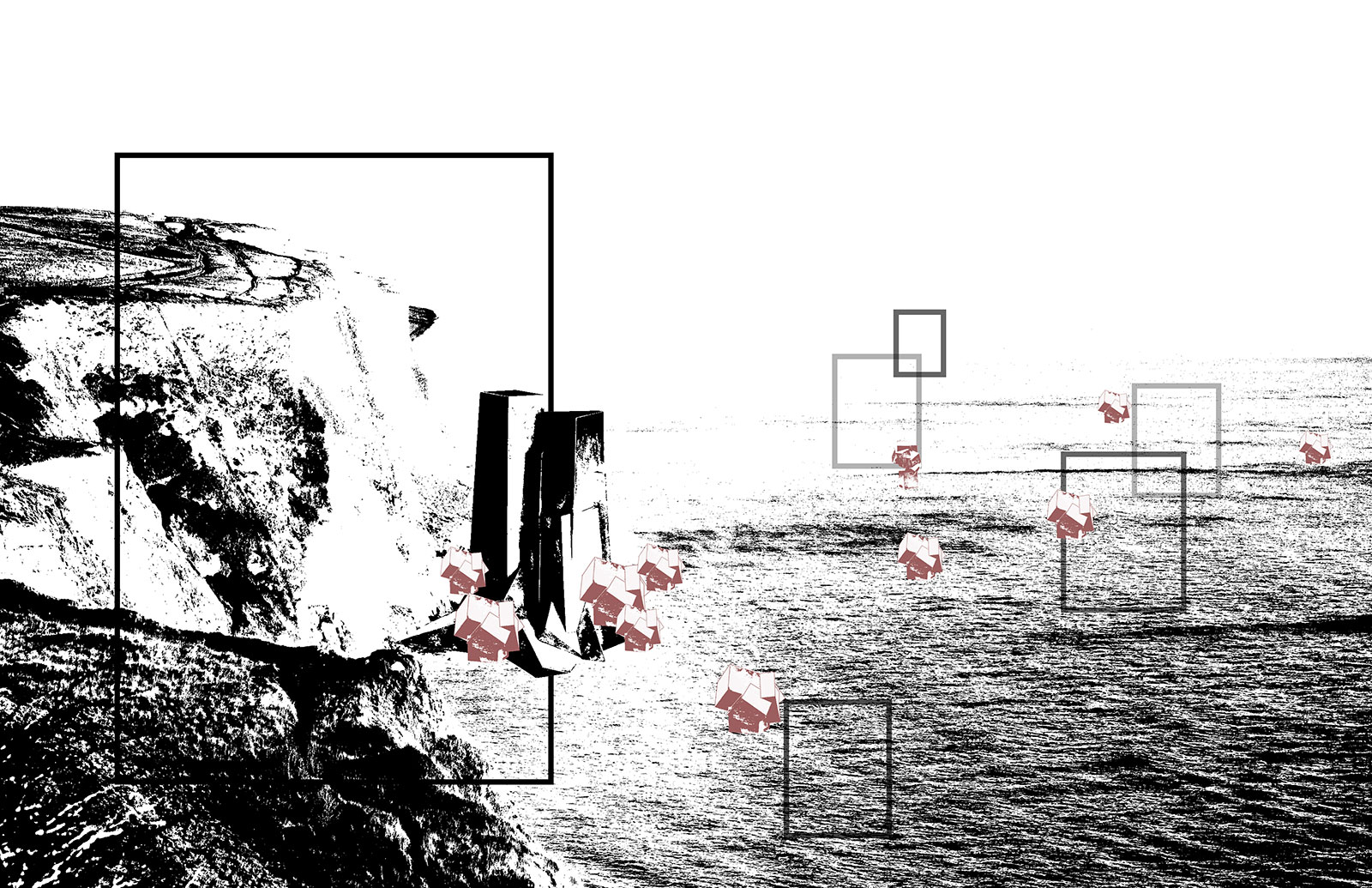
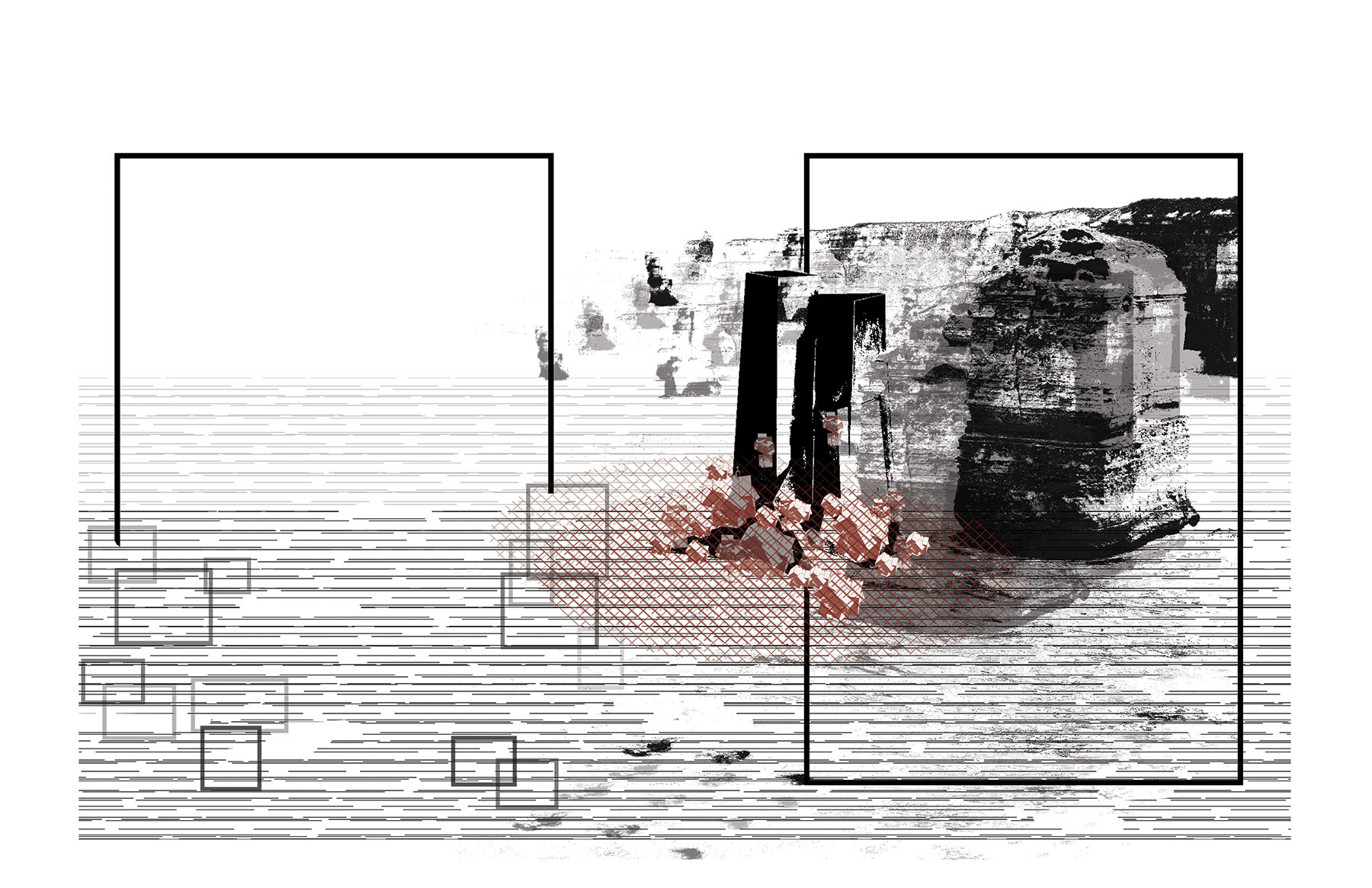
The West Coast has never been foreign to conspiracy theories and the buzz that was generated during and after the construction of these sentinels triggered a social phenomenon of its own, with many judging their construction as a sign of the government admitting a point of no return from the consequences of climate change.
Just as obelisks were once erected to showcase the might of a civilization, many assumed that these sentinels built with salt, vulnerable and delicate, were designed to deteriorate easily and dramatically, as if to jolt future generations awake to their impending demise.
Often compared to the statues of the Easter Islands, the sentinels represent a last-ditch attempt by a people well beyond a no-return ecological breakpoint to affect positive change. The structures were erected as a warning to future generations against greed and lack of foresight.
Today, after decades from their construction, the great deluge was a confirmation to conspirators that the devolving US government was in fact aware of the ecological crises they publicly denied.
Whatever the reasons for their construction, the sentinels today are almost completely destroyed.
With the advent of climatic disasters around the globe, we at the Department of Exponential Occurrence with the Nouvea-Quebec School of Post-Deluge Archeological Survey, have been studying San Onofre as the first of many cases of social movement and behavior in the face of an ecological end-of-times.
![]()
![]()
This report represents:
- a map of the location of the great 7 along with the location of the desalinators that produced the salt slurry used in construction
- a representation of the social impact of the sentinels on social networks and others, almost creating a “cult of doom” from younger generations accusing their predecessors for straining and ultimately destroying our planet
- Here we have a cross sectional survey of alpha zero, the largest of the structures build between 2035 and 2039
- A model study of alpha zero’s deterioration built from the same slurry and artificially weathered to speed up the natural process of deterioration to help us predict how the remaining 4 will behave
- We have also been documenting paraphernalia relating to these structures from construction models to cult artifacts picked up from neighboring communities.
Whatever the reasons for their construction, the sentinels today are almost completely destroyed.
With the advent of climatic disasters around the globe, we at the Department of Exponential Occurrence with the Nouvea-Quebec School of Post-Deluge Archeological Survey, have been studying San Onofre as the first of many cases of social movement and behavior in the face of an ecological end-of-times.


This report represents:
- a map of the location of the great 7 along with the location of the desalinators that produced the salt slurry used in construction
- a representation of the social impact of the sentinels on social networks and others, almost creating a “cult of doom” from younger generations accusing their predecessors for straining and ultimately destroying our planet
- Here we have a cross sectional survey of alpha zero, the largest of the structures build between 2035 and 2039
- A model study of alpha zero’s deterioration built from the same slurry and artificially weathered to speed up the natural process of deterioration to help us predict how the remaining 4 will behave
- We have also been documenting paraphernalia relating to these structures from construction models to cult artifacts picked up from neighboring communities.
a monument to the Anthropocene and the legacy to human agency.

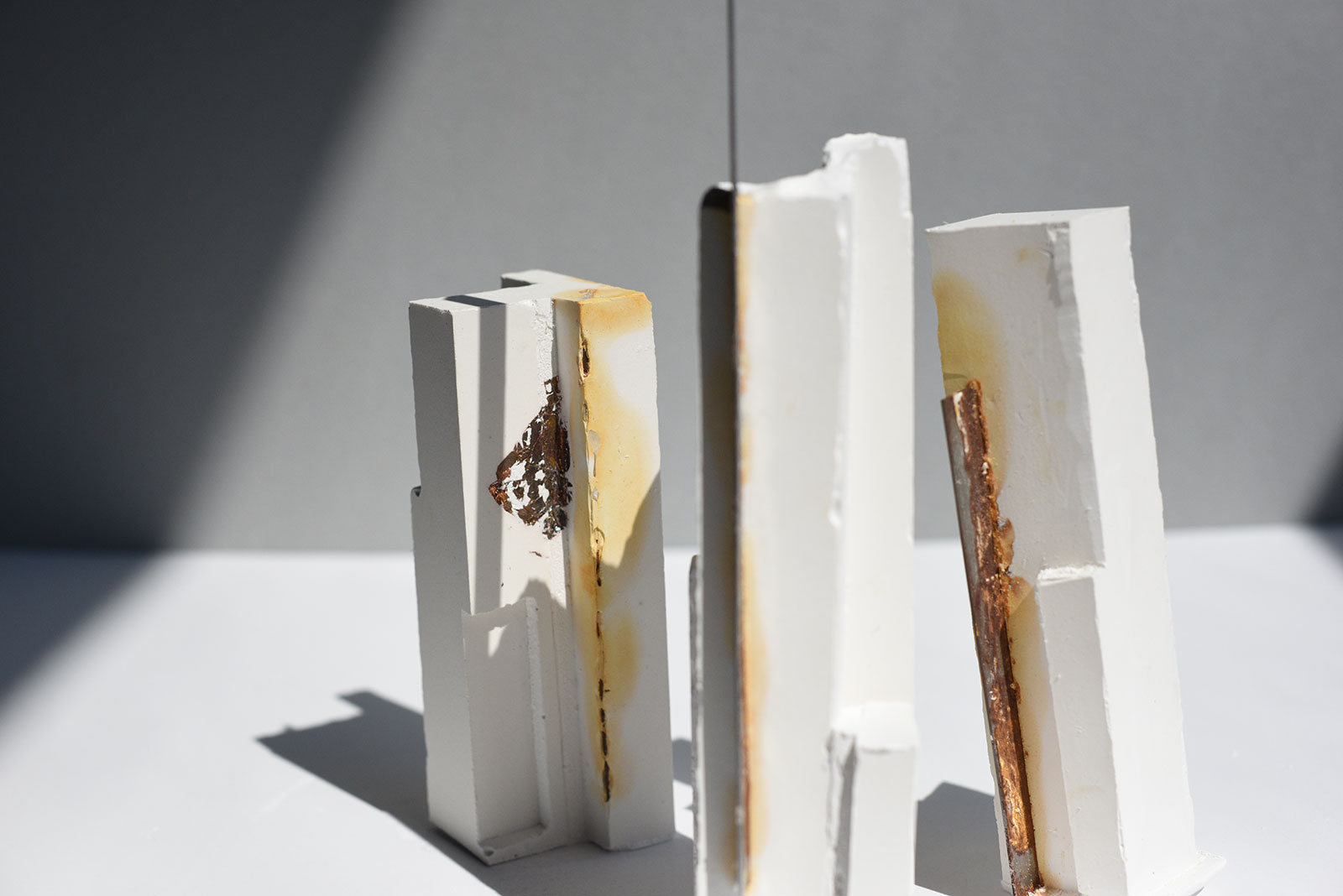



We will become extinct; extinction is normal, it’s natural. We don’t have the power to stop our own extinction but we have the power to make it count. I believe that our best chance is to design our own really elegant ending, so that we will leave a legacy that means something, and remains, in the future. — Paola Antonelli senior curator of the department of architecture and design at MOMA and the 2019 Milano Triennale Broken Nature.

